3.5. Asset Detail View
Asset detail view:
Here, users can view detailed information about the asset (as shown in the following screenshots). Clicking on a specific asset in the asset list will navigate users to the asset detail view.
The following features and tabs are displayed. Clicking on a specific section will allow the user to navigate to that respective section.
-
- Asset health (default)
- Work order
- Case
- Finance
- Relocation
- Inventory
- Documents
- E-PTW
1. Asset Health Section: Users can view the asset health information, including status categories such as normal, warning, critical, and whether the asset is active or inactive.
2. Work Order Section: Users can view the number of work orders and their associated statuses for the asset.
Clicking on the “Work Order” button (as shown in the above screenshot) will navigate the user to the new work order page to create a work order under the asset's name.
To request the Relocation of an asset, follow these steps:
Note: Refer to sections 6.2, "Pre-requisites for Work Orders Creation," and 6.3, "New Work Order," in the “6. Work Orders” module for more details.
Step 1: In the Work Orders settings module, add a new Category, SLA type (for both resolution and response), Auto Assignment Agent, and Auto Assignment Supervisor. Configure Resource Groups in the My Organisation module settings.
Note: Asset details will be auto-filled by the system
Ensure all mandatory fields are filled in to enable the "Save" button.
Click on the "Save" button. A confirmation message stating "Work order created successfully" will be displayed, and the system will navigate to the work order detail view page as shown in the following screenshot.
The user can view the work order details for an asset on the work order view page, as displayed in the following screenshot.
Step 3: The user can view the work order for an asset in the work orders section of the asset view page, as shown in the following screenshot.
3. Case Section: Here user can view all the associated case with the asset.
Here, the user has the option to create a new case for an asset by using the “New Case” button (as shown in the above screenshot). Clicking this button will navigate the user to the New Case page, where asset details are displayed, allowing the creation of a new case for the asset.
Please follow the steps below to request the relocation of an asset:
Note: For more information, please refer to sections "Pre-requisites for Case Creation," and "New Case," in the 5. Case module.
Step 1: Add the case type, case subtype, SLA configuration, auto-assignment for case owner and agents, and case association configuration in the Settings -> Case module. Create an agent with the Case Owner role to enable automatic assignment of a case owner when creating a new case. Configure resource groups in the Settings -> My Organisation module.
Step 2: Select an asset from the Assets module and click on it to view the asset details. Then, navigate to the Case section and click the “New Case” button to create a case under this asset.
Asset Details are auto filled by system.
Next steps.
Fill in all mandatory fields. The Save button will only be enabled once all required information has been provided.
Click on the "Save" button. A confirmation message, "Case created successfully," will be displayed, and the system will navigate to the Case detail view page, as shown in the following screenshot.
The user can view case details for an asset on the Case details view page, as shown in the following screenshot.
Step 3: The user can view the case details under the asset in the Case section of the Asset module, as shown in the following screenshot.
4. Finance Section: Here, users can view the financial information of the asset. Users can refine the data for 3 months, 6 months, 1 year, or customize the date range to view the asset's financial data over the selected period. Based on the selection, the graph will display the relevant financial data. Users can also view the asset's maintenance cost and depreciation rate, as shown in the following screenshot.
5. Relocation Section: Here, the user can view already raised relocation requests. By clicking on the "New Request" button, the user can raise a new request, and the system will redirect the user to the Work Orders page.
When you click on the (Relocation) “New Request” button the system will navigate to a new work order page with some auto filled data of selected asset. Here you can fill remaining fields and click on save to apply for asset relocation.
Please follow the steps below to request the Relocation of an asset.
Note: For more information, please refer to sections "Pre-requisites for Work Orders Creation," and "New Work Order," in the “6. Work Orders” module.
Step 1 : Add a new Category, SLA type both resolution and response, Auto assignment Agent, Auto assignment Supervisor in the settings work orders module. Configure Resource groups in the settings My Organisation module.
Step 2: Select an asset from the Assets module and click on it to view the asset details. Then, navigate to the Relocation section and click the “Relocation” button to add the relocation request of work order to asset.
Note: The details in the relocation request form are auto-filled by the system.
Ensure that all mandatory fields are filled in. Only then will the "Save" button be enabled.
Click on the "Save" button. A confirmation message stating "Work order created successfully" will be displayed, and the system will navigate to the Work Order detail view page, as shown in the following screenshot.
The work order for relocation details will be displayed on the details view page, as shown in the following screenshot.
Step 3: The user can view the relocation request under the asset in the Work Orders section, as shown in the following screenshot.
6. Inventory Section: All inventories associated with the selected asset will be displayed in this section.
Users can add new inventories by clicking on the “New Inventory” button, which will redirect the system to the new inventory page.
Please follow the steps below to tag inventory to an asset:
Note: For more details, refer to sections 4.2, "Pre-requisites for Inventory Creation," and 4.3, "New Inventory," in the “4. Inventories” module.
Step 1: Add a new SKU in the Inventory feature within the Settings module, as shown in the following screenshots.
Fill in all mandatory fields and click on the “Add SKU” button. A confirmation message, "SKU registered successfully," will appear. The registered SKU will then be displayed at the top of the SKU table.
Step 2: Select an asset from the Assets module and click on it to view the asset details. Then, navigate to the Inventory section and click the “New Inventory” button to add the inventory to the asset.
Note: The “Asset Tagging” field is automatically populated by the system. Fill in all the mandatory fields, and once completed, the “Save” button will be enabled.
Click on the “Save” button. A confirmation message, “Inventory registered successfully,” will be displayed, and the system will navigate to the inventory view page.
Step 3: To view the inventory tagged to an asset, navigate to the Assets module, select the desired asset to view its details, and then go to the Inventory section. The tagged inventory details will be displayed there.
7. Documents Section: In this section, the user can add new documents by clicking the "New Documents" button. The user can also view and manage existing attached documents. To download any of the attached documents, the user can click the download button, as shown in the following screenshot.
8. e-PTW Section: This section allows users to manage electronic permits to work (ePTW) for the asset.
9. Asset QR Code: QR code generated for the asset which can be downloaded.
When the user clicks on the QR code icon, a window displaying the QR code will appear. The window will also feature a "Download QR Code" button, allowing the user to download the QR code for the asset.
10. Asset Edit: To update asset details, click on the edit icon. The system will navigate to the edit asset page, allowing the user to make and save changes.
11. Comments Section: Users can add new comments in this section.
12. Active Log Section: All activities related to the selected asset are recorded in this section.
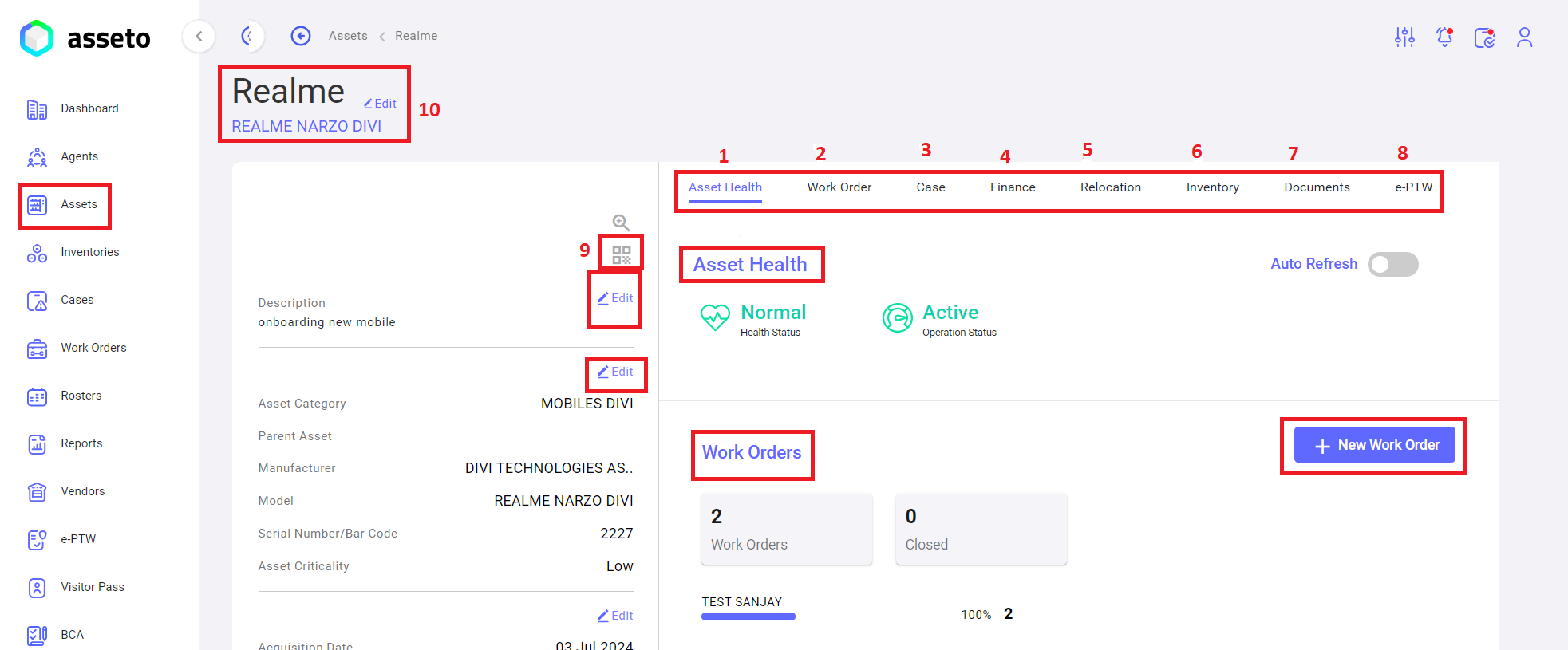
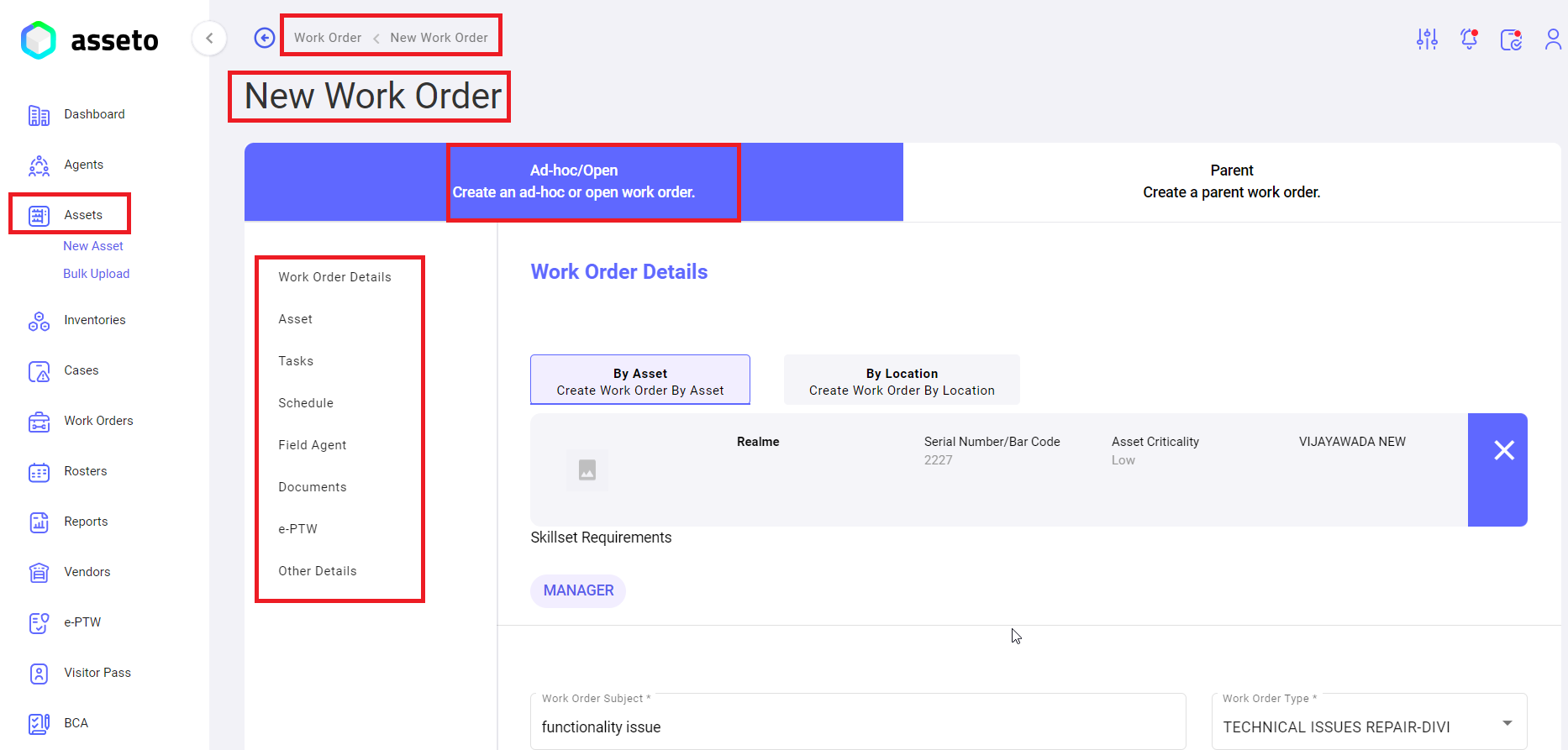
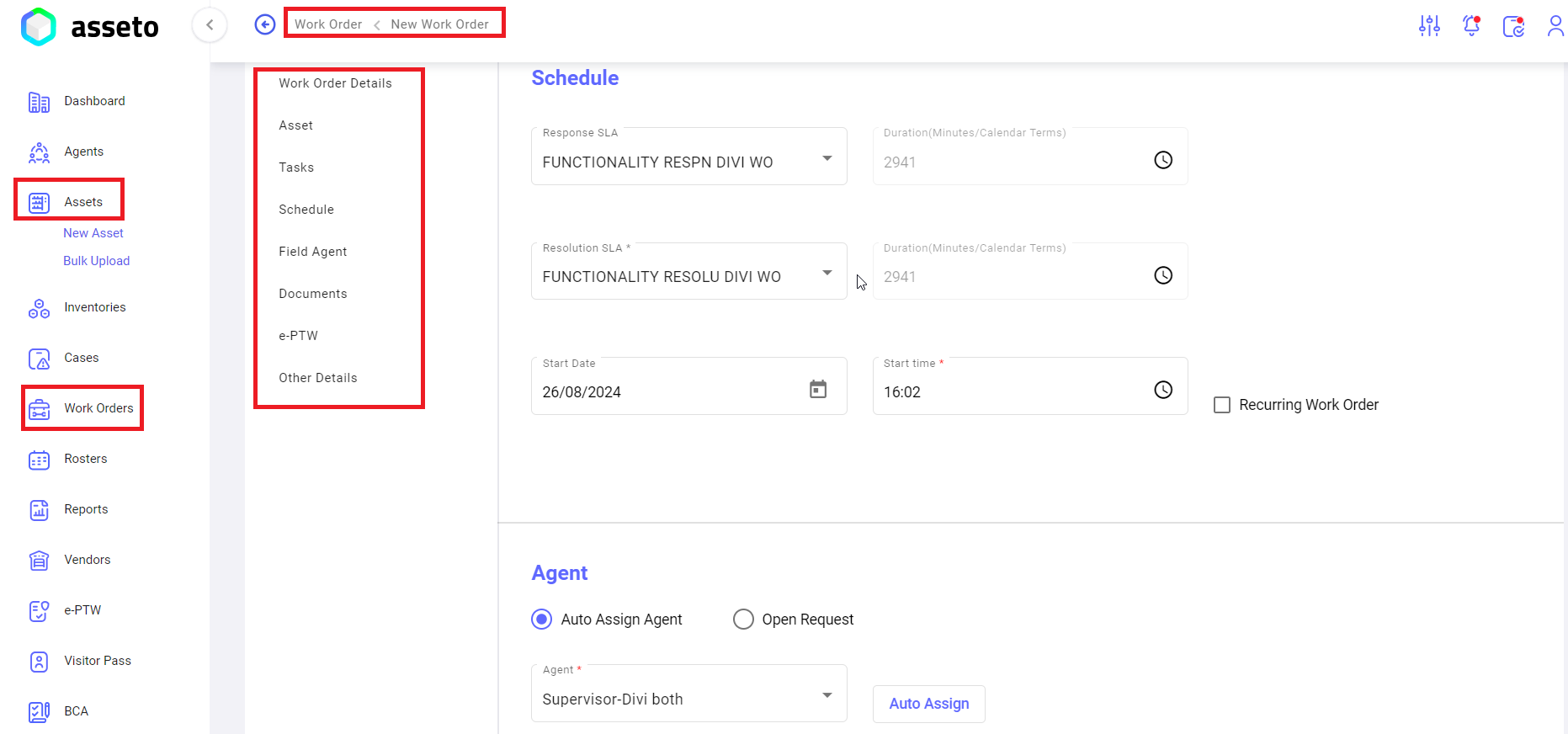
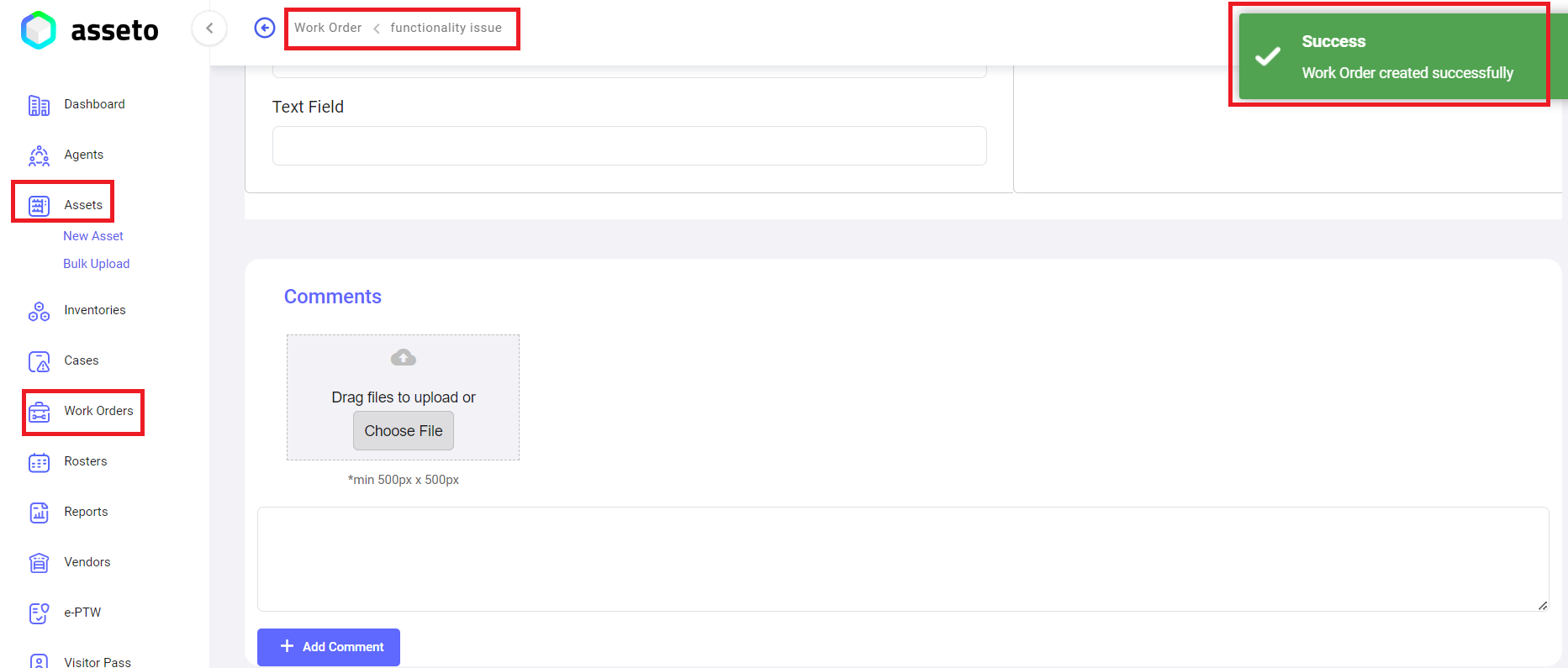
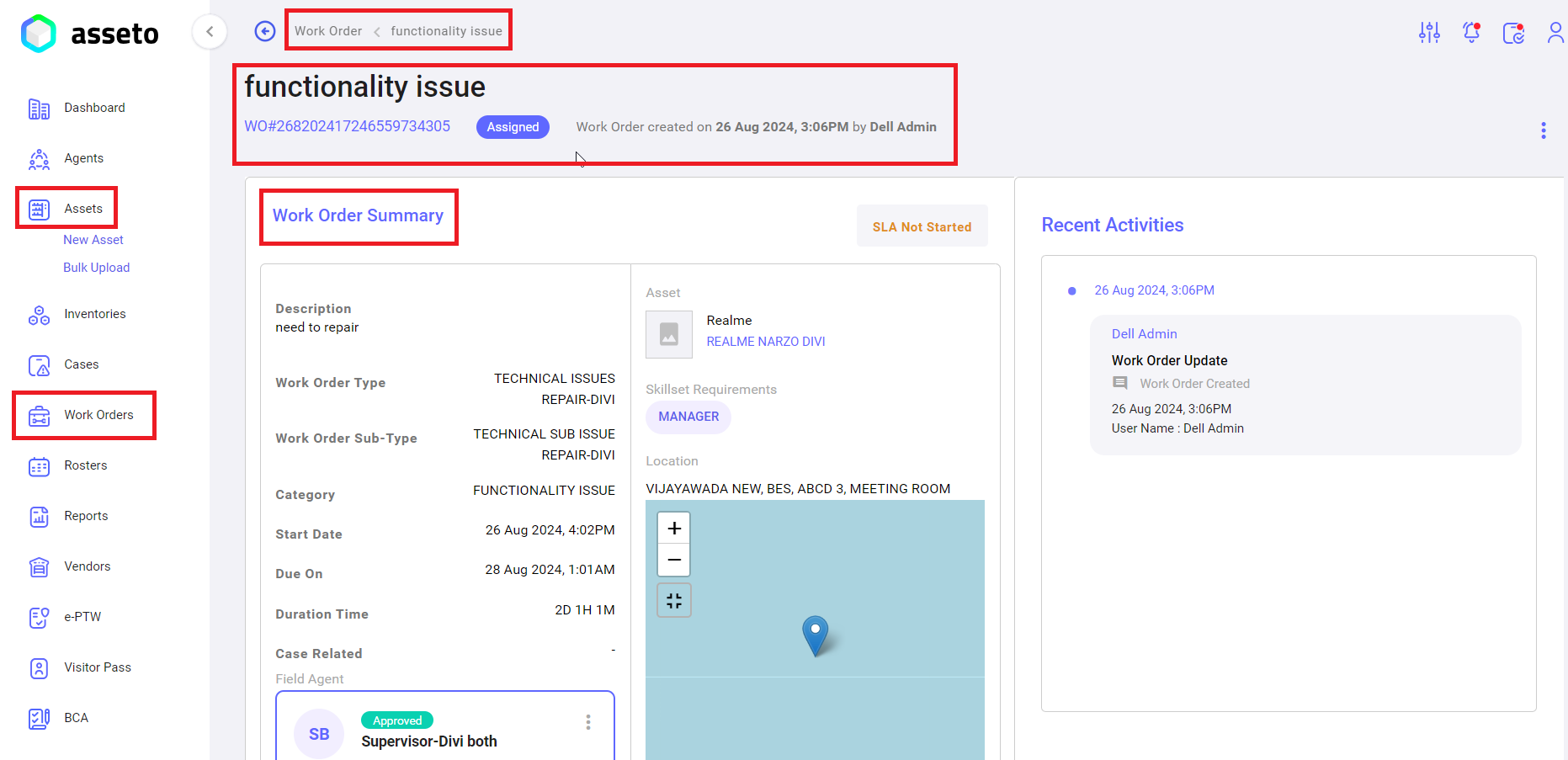

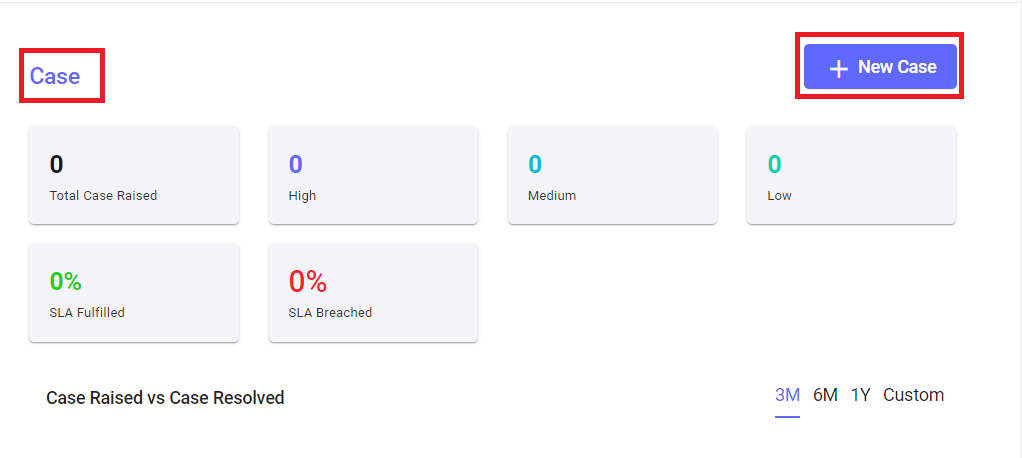
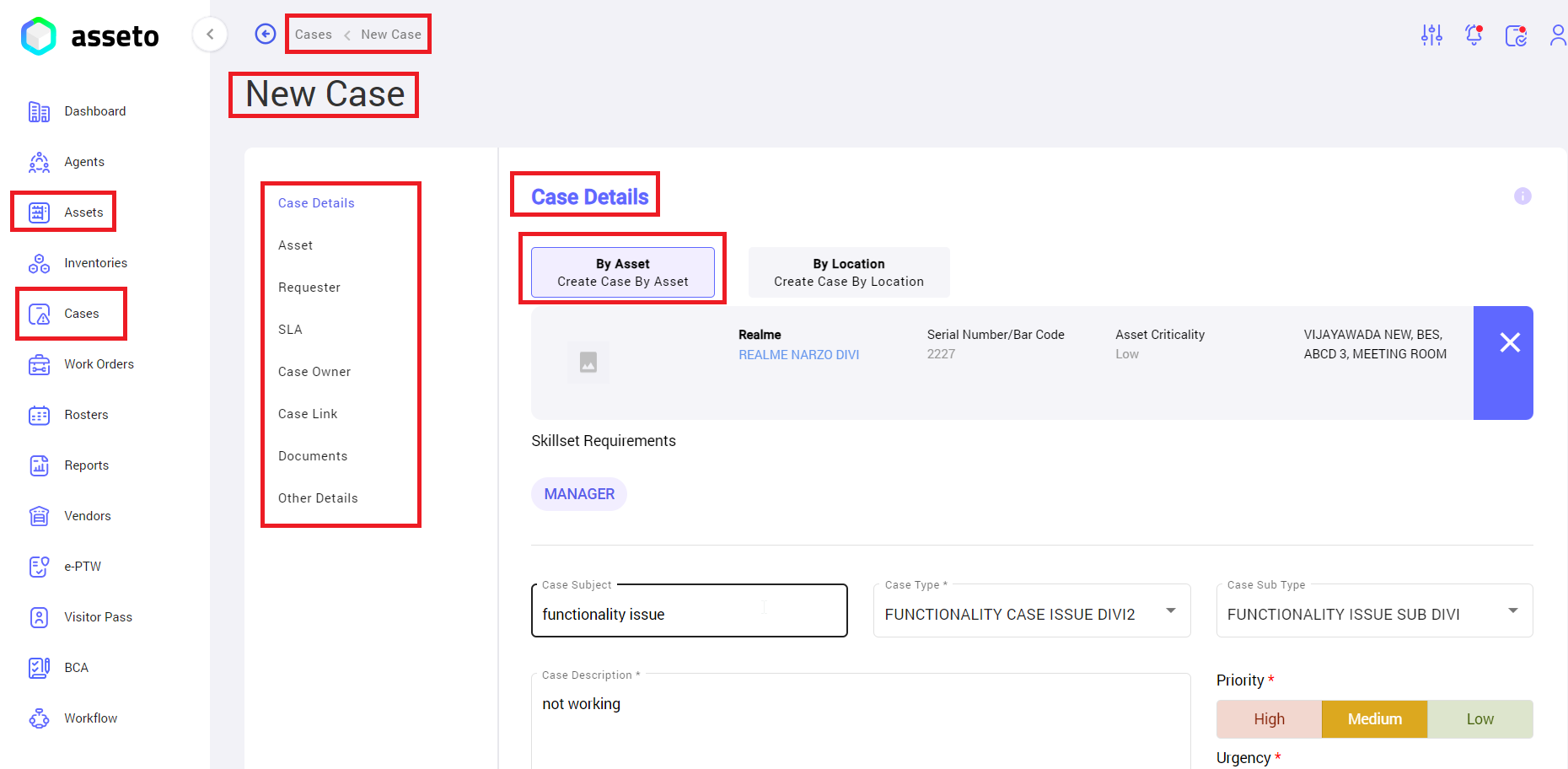

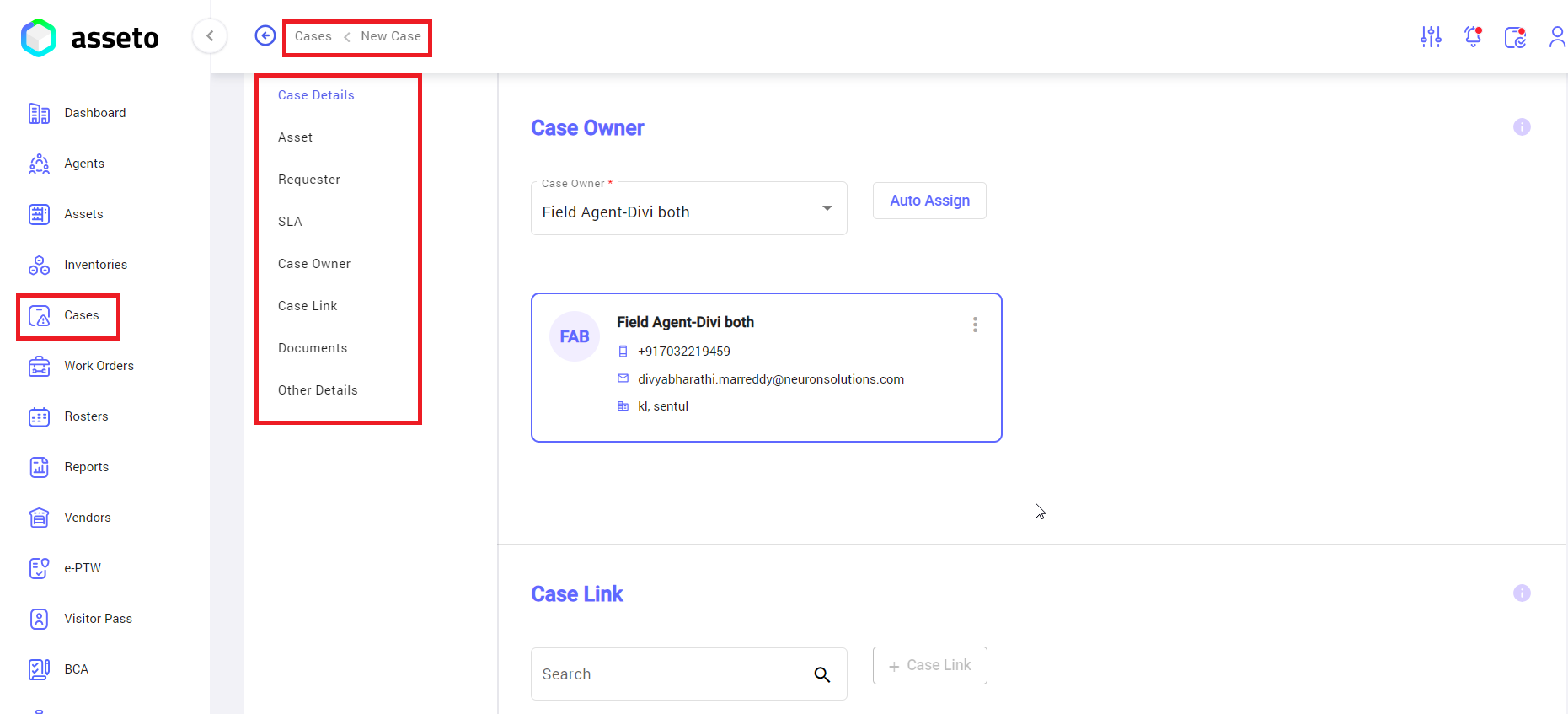
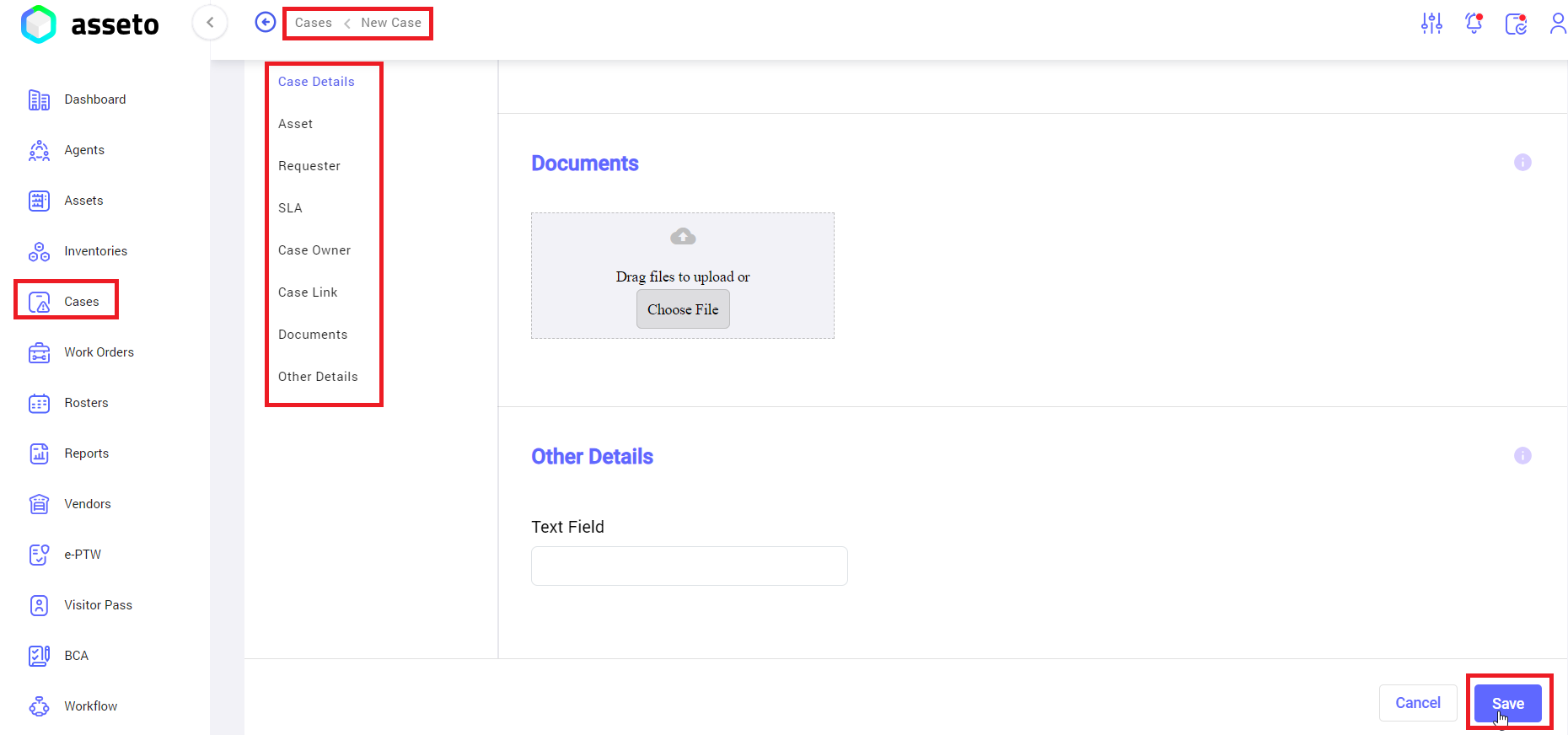
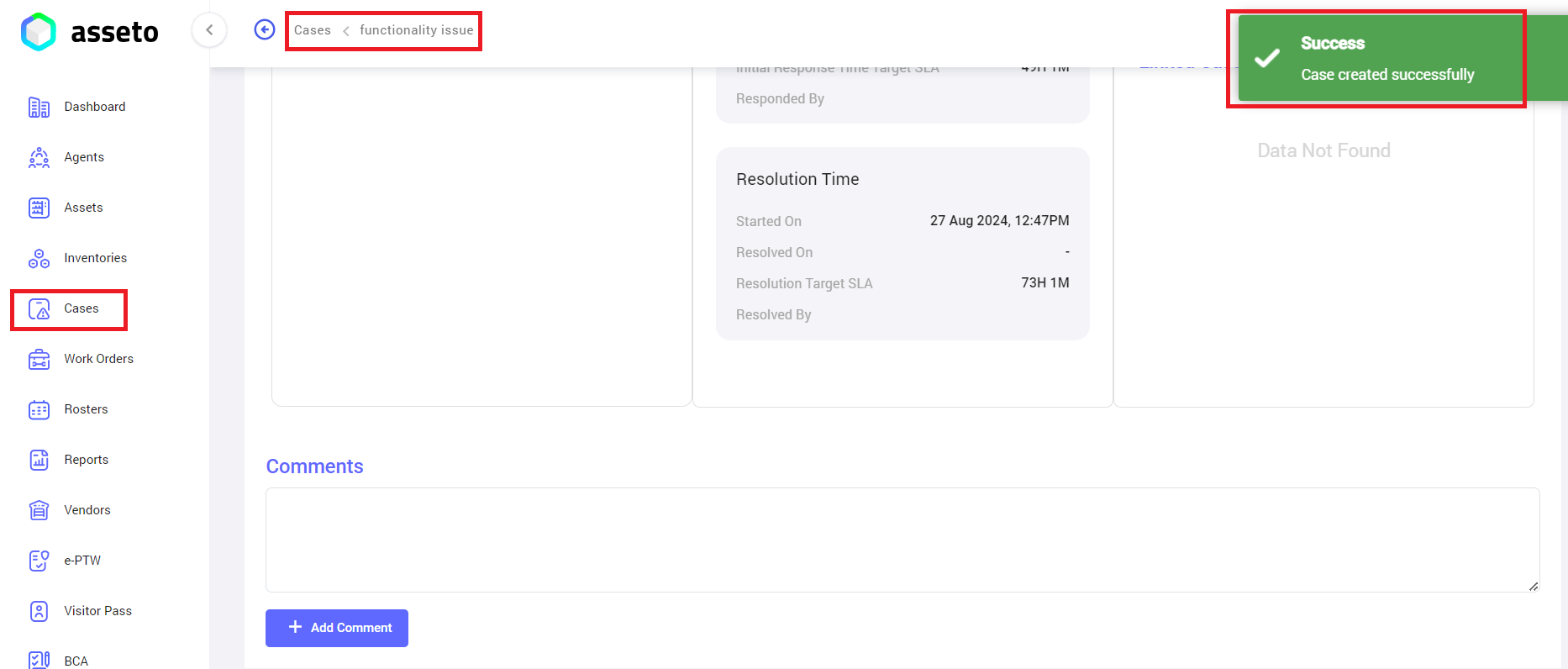
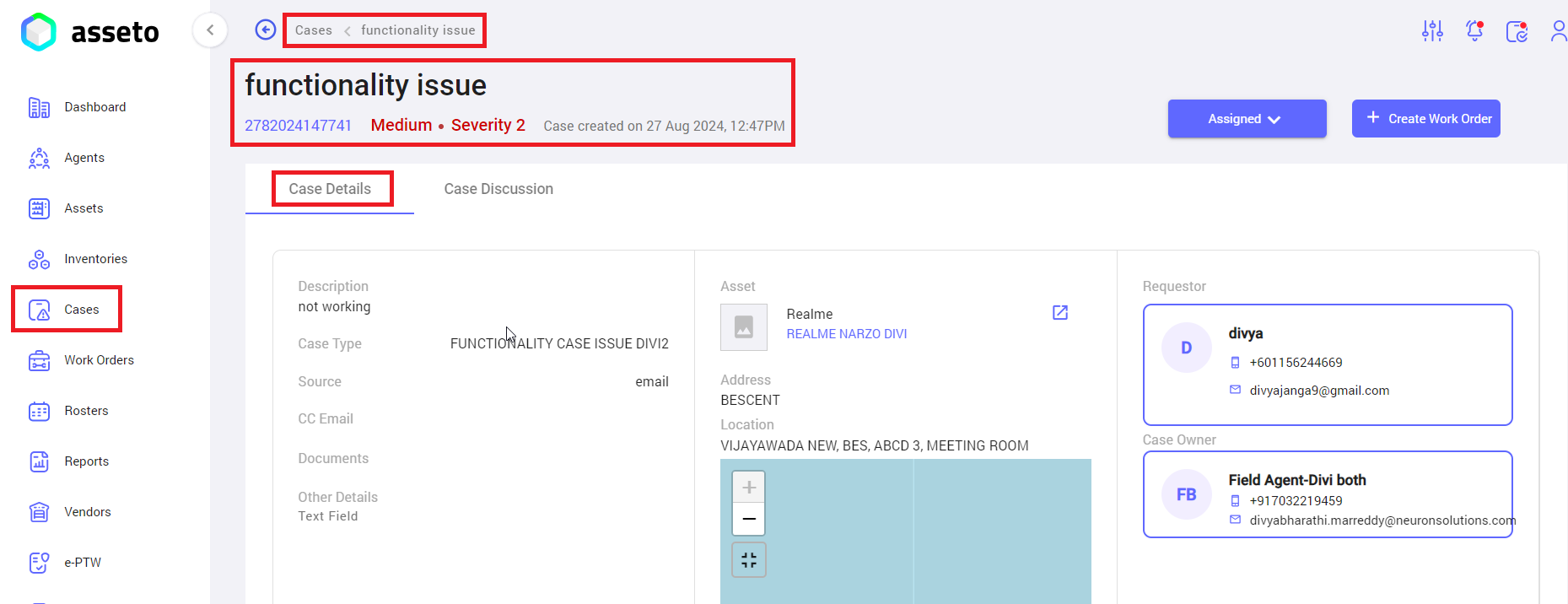

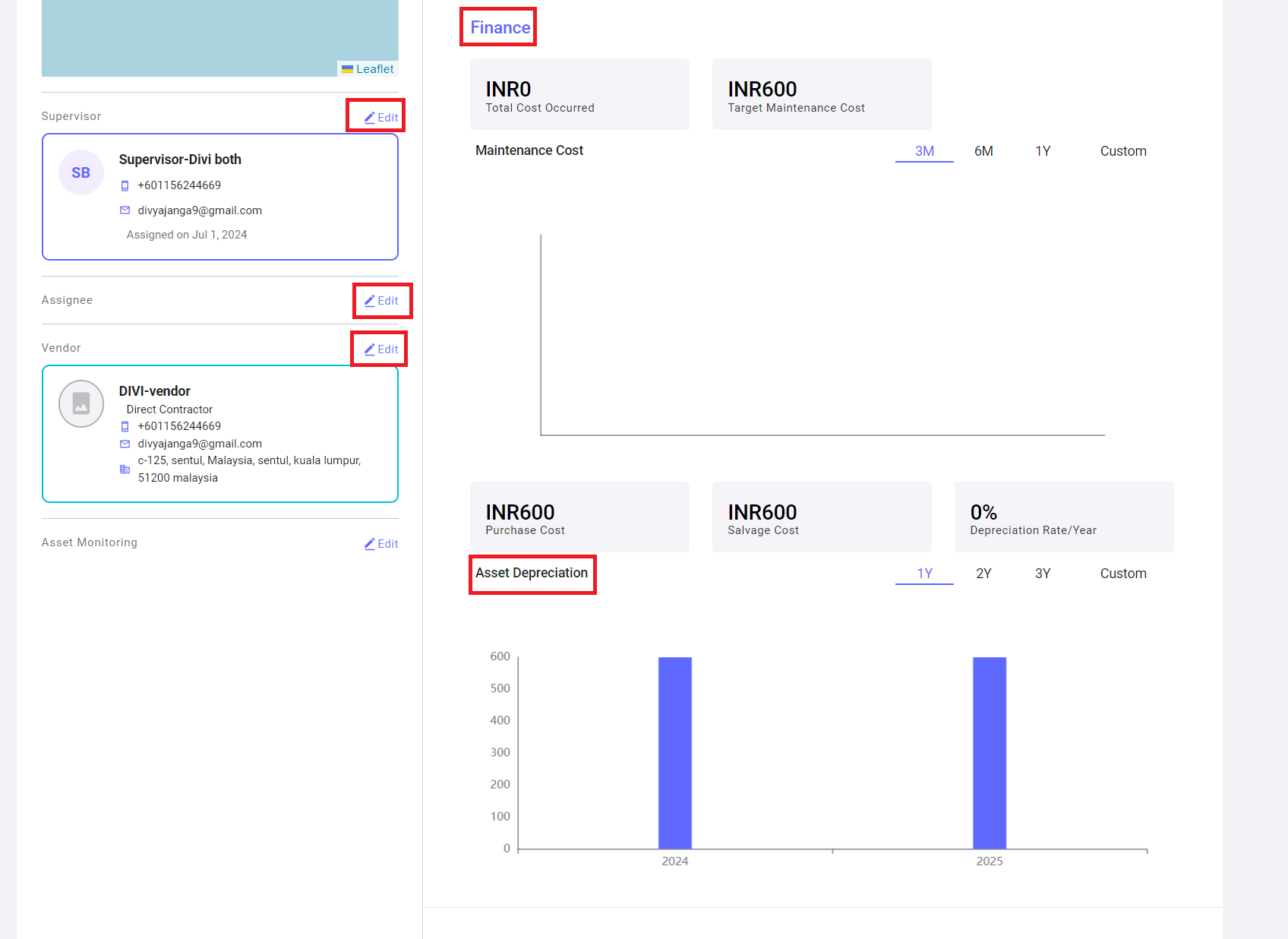

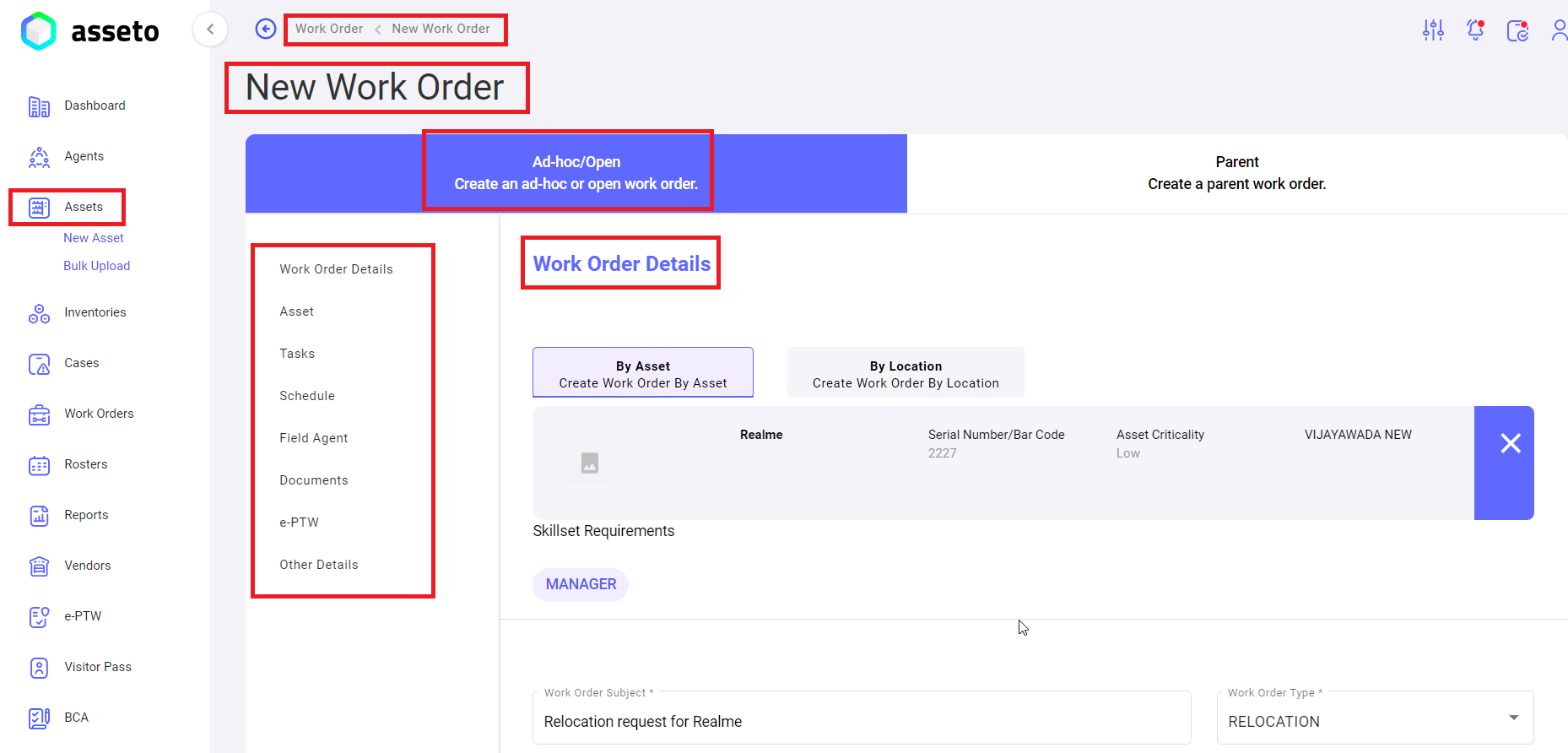
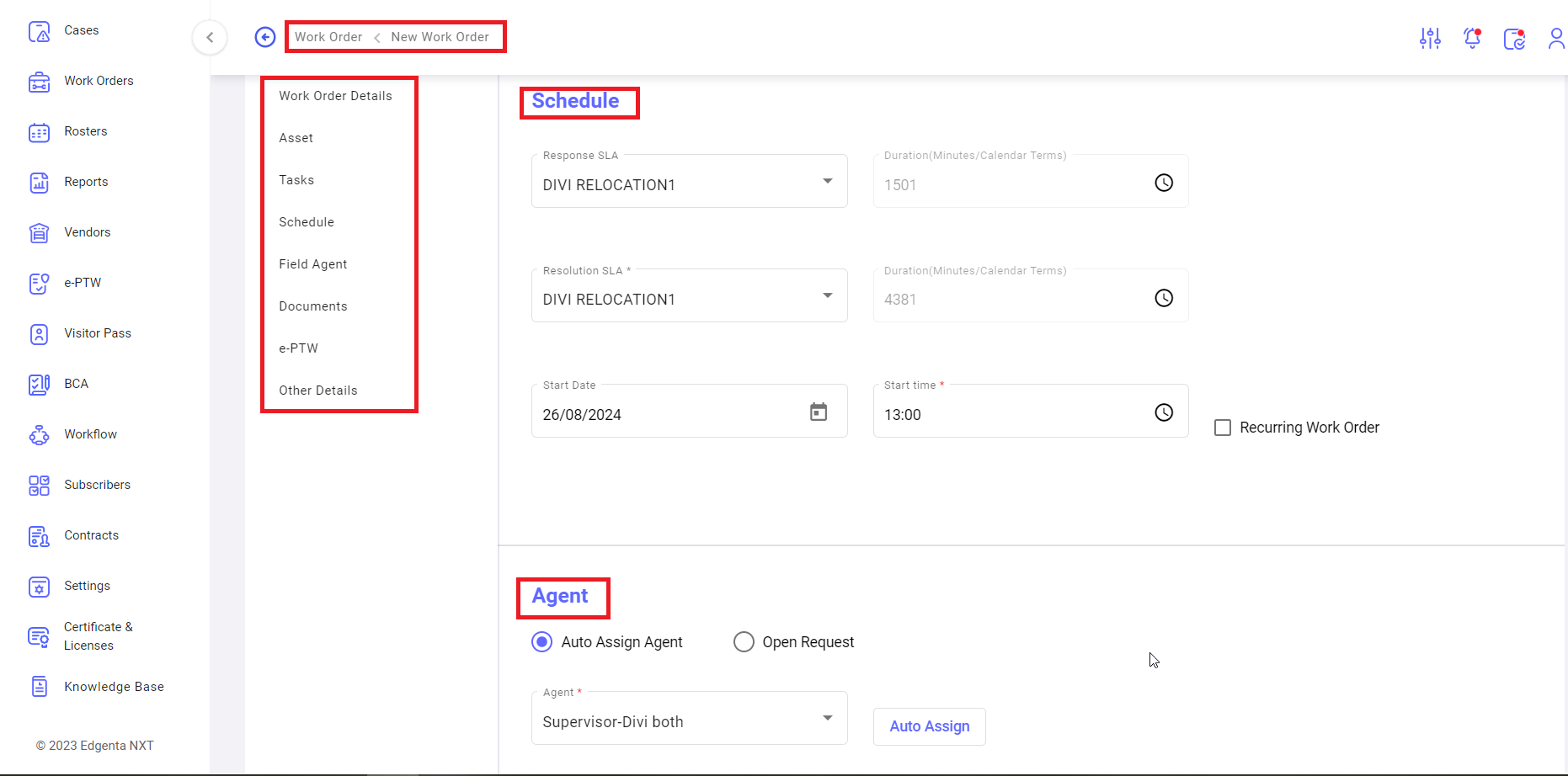

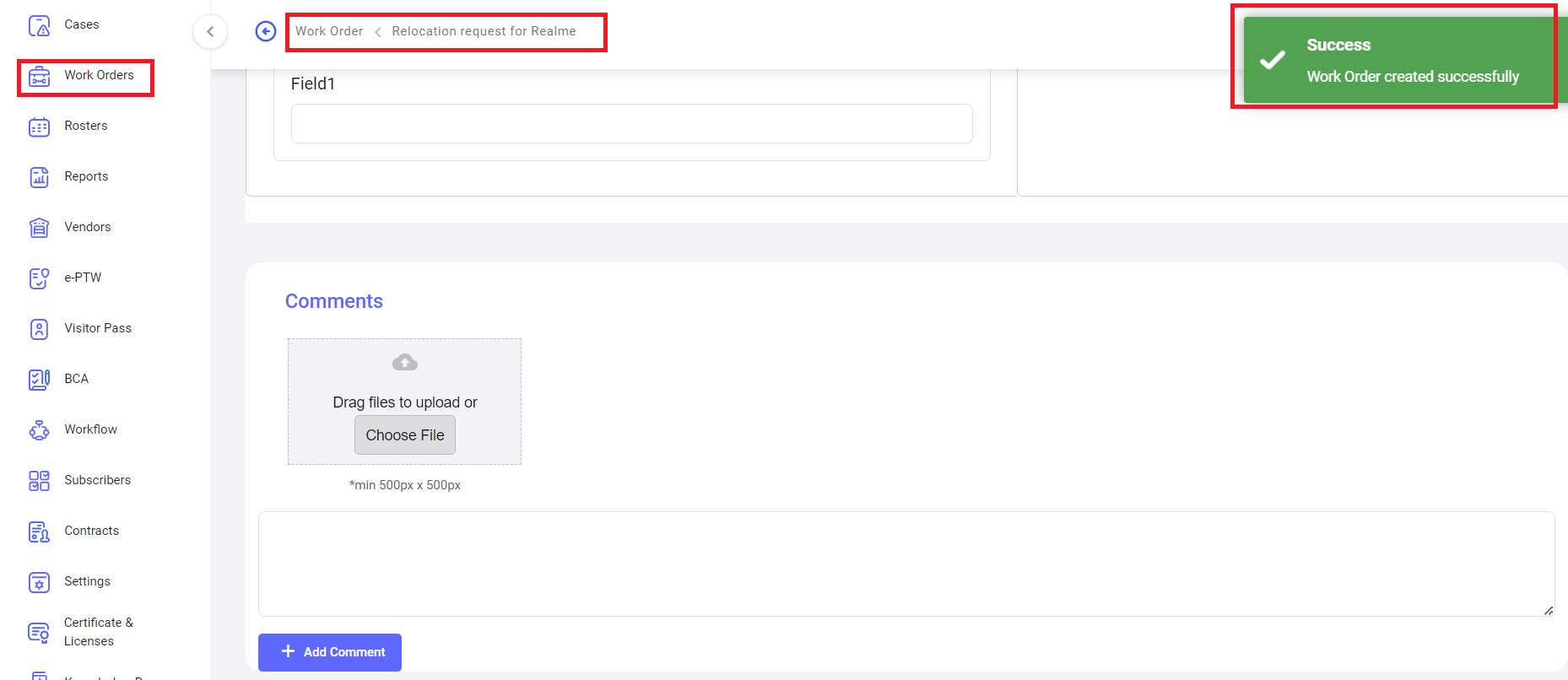

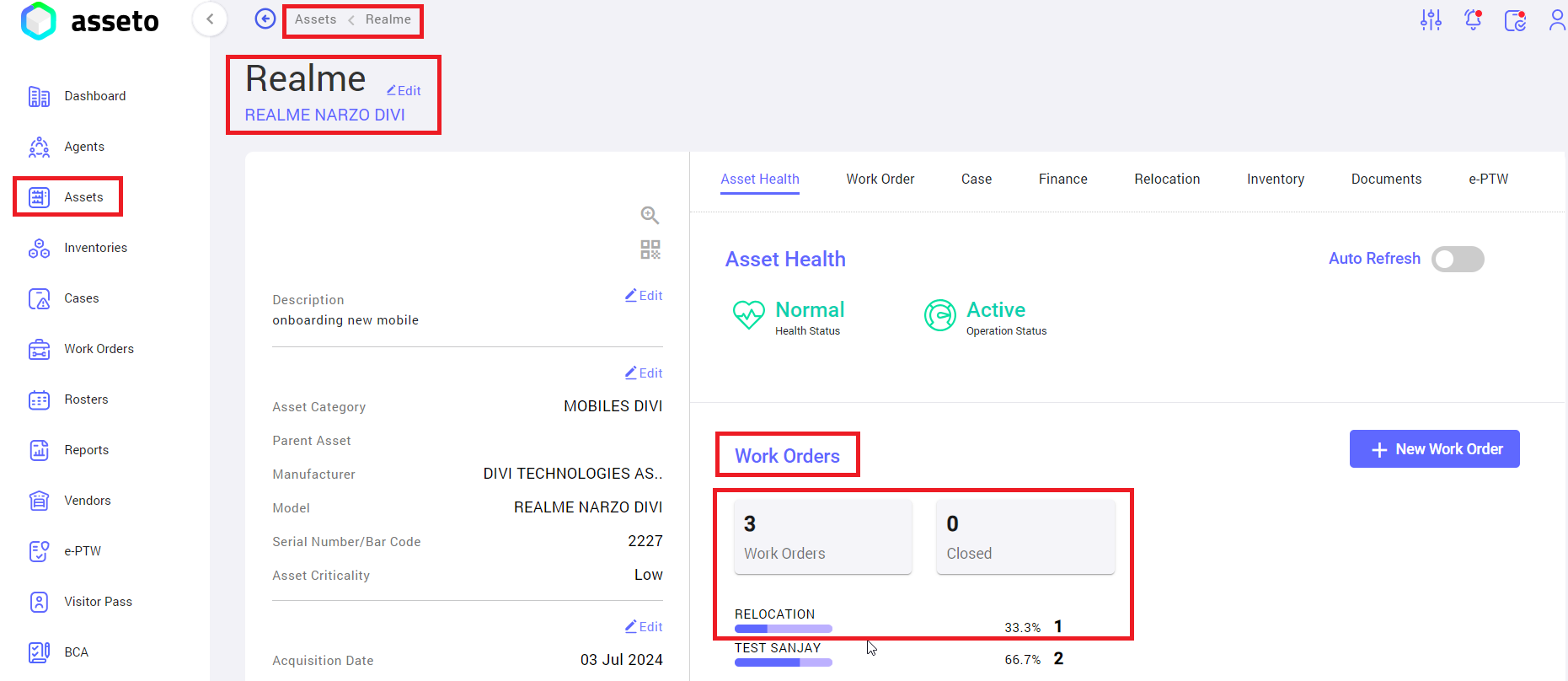

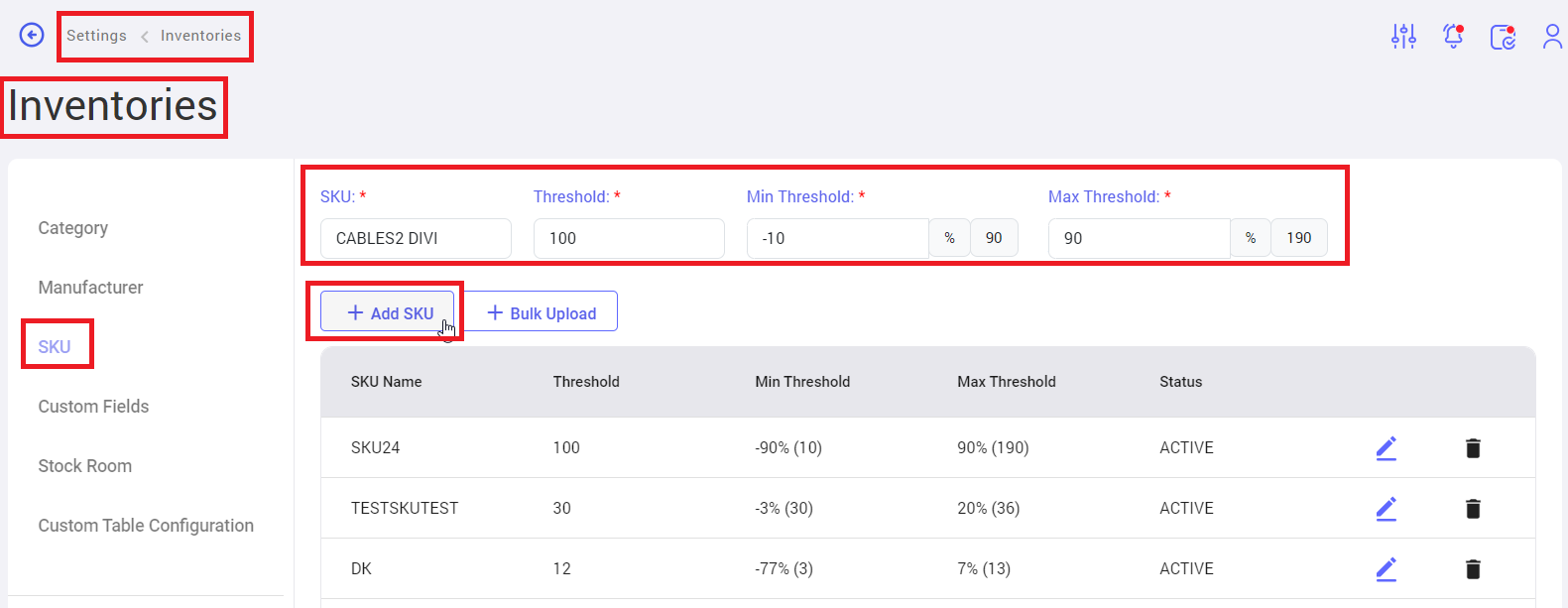
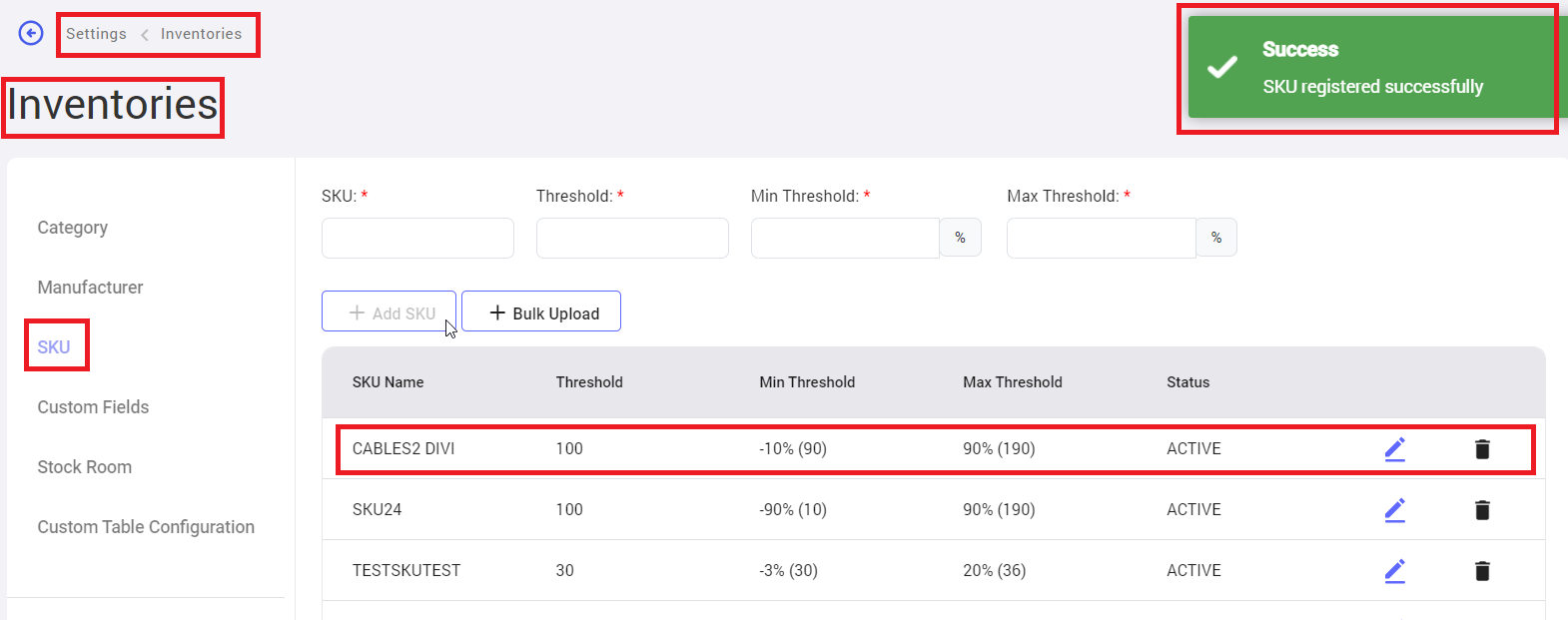
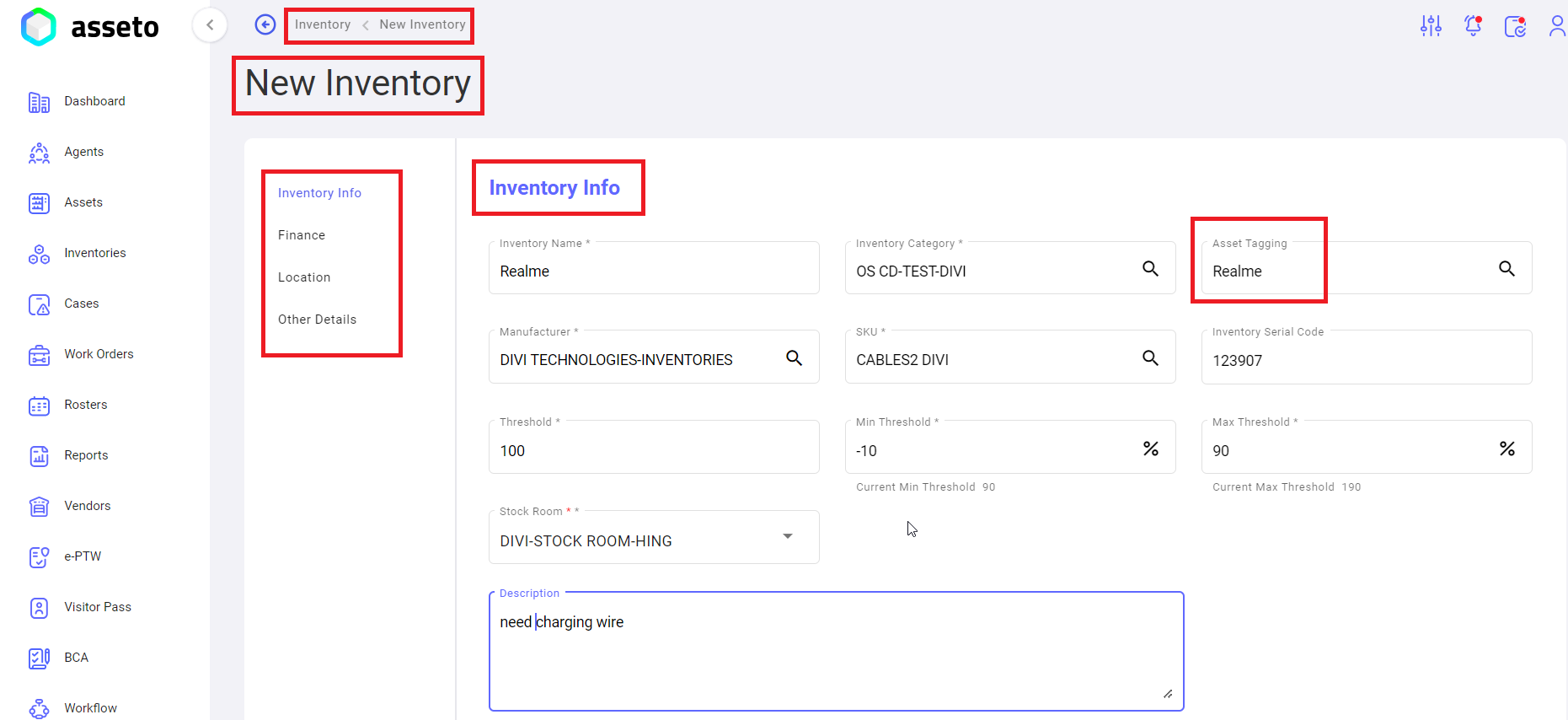
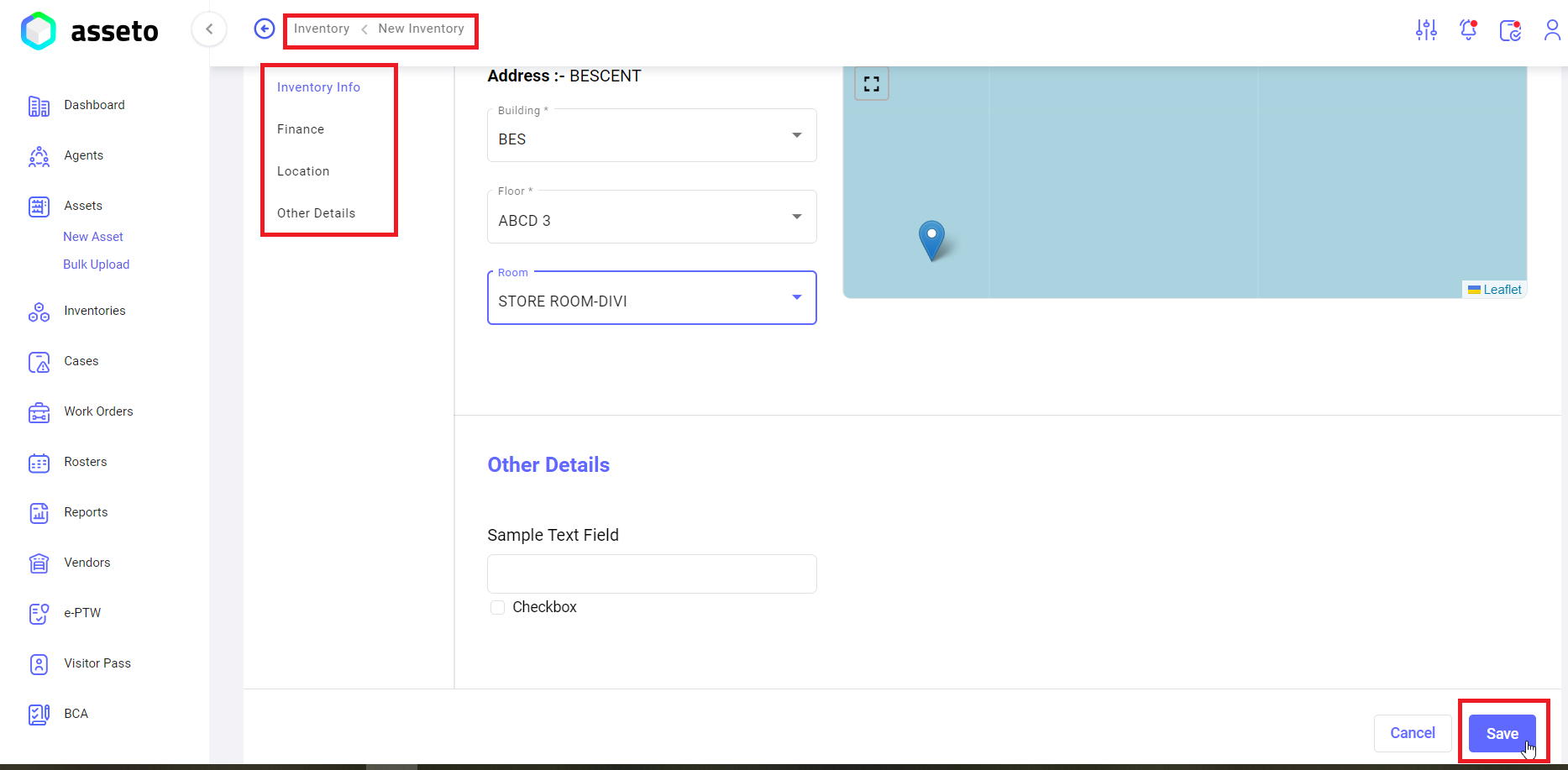
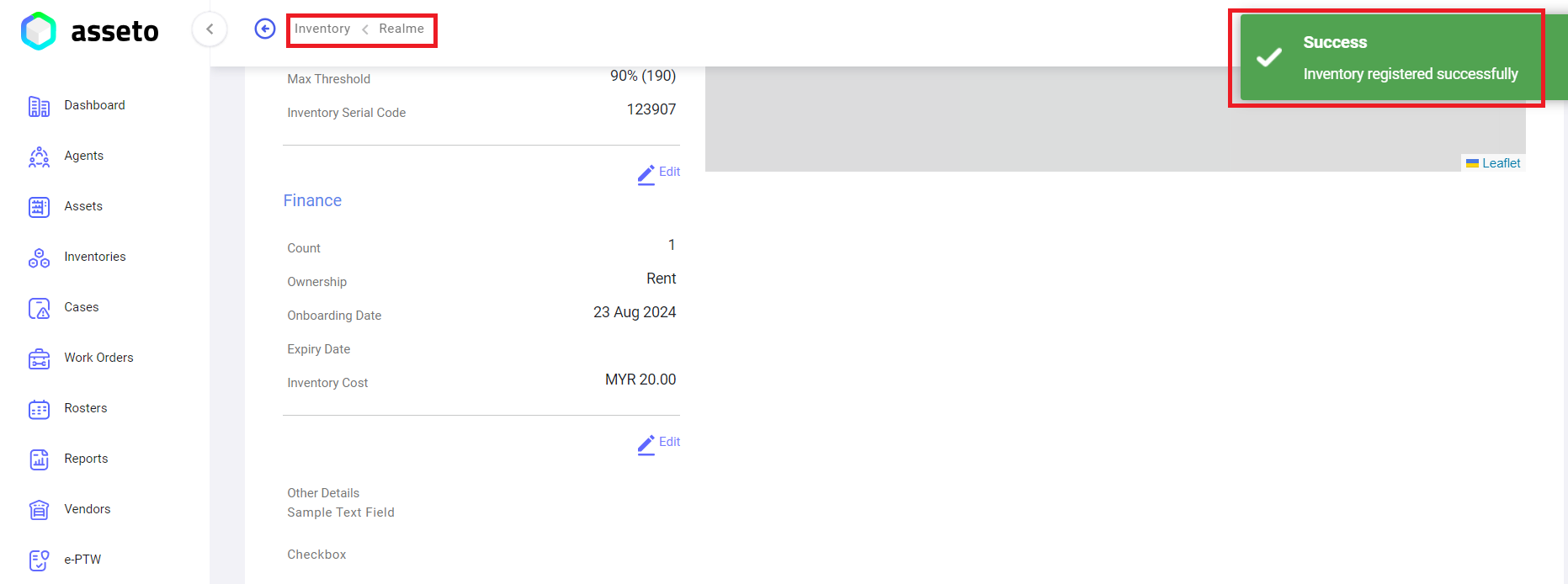
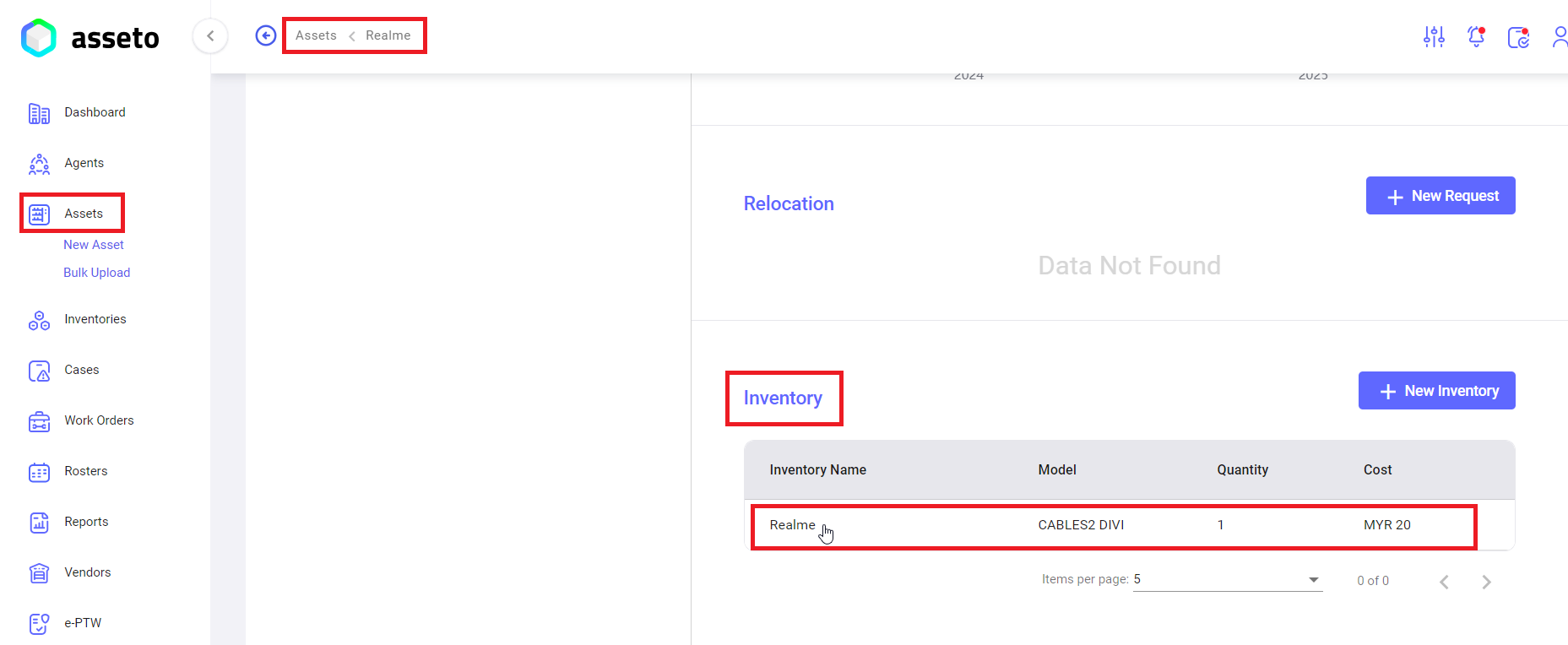





No Comments